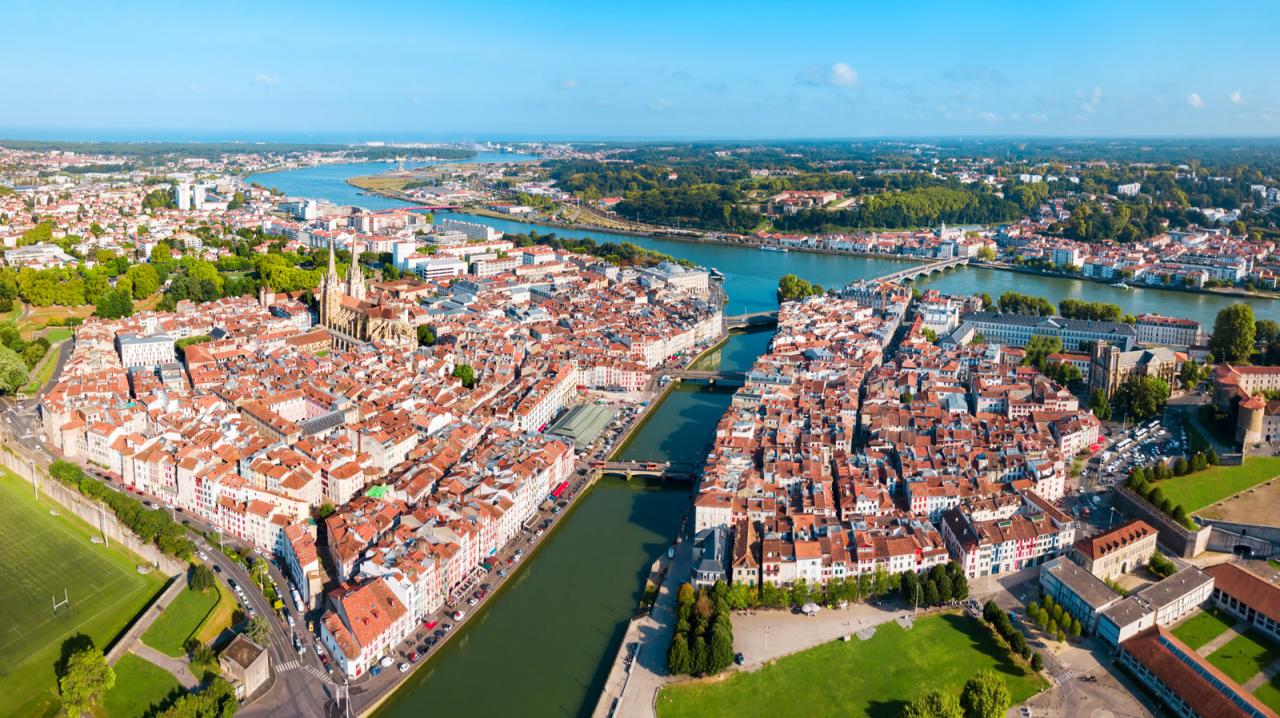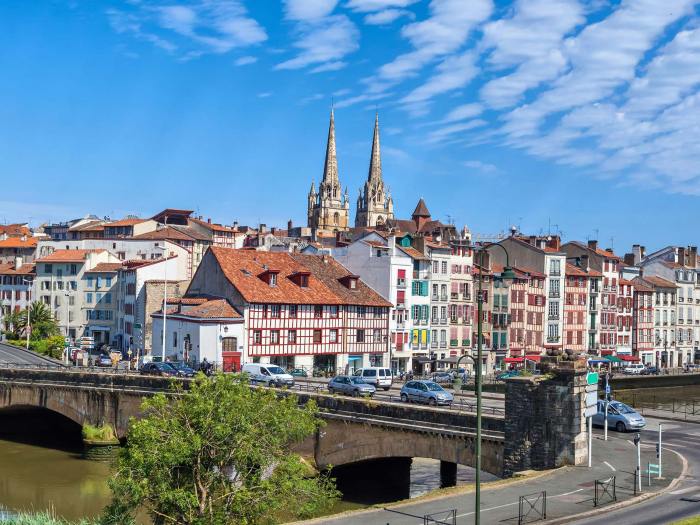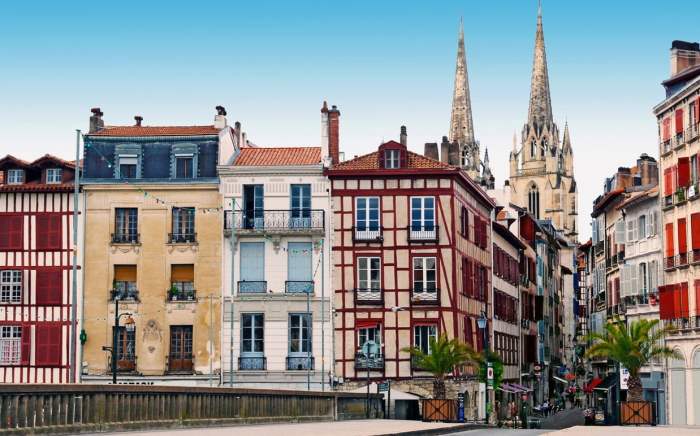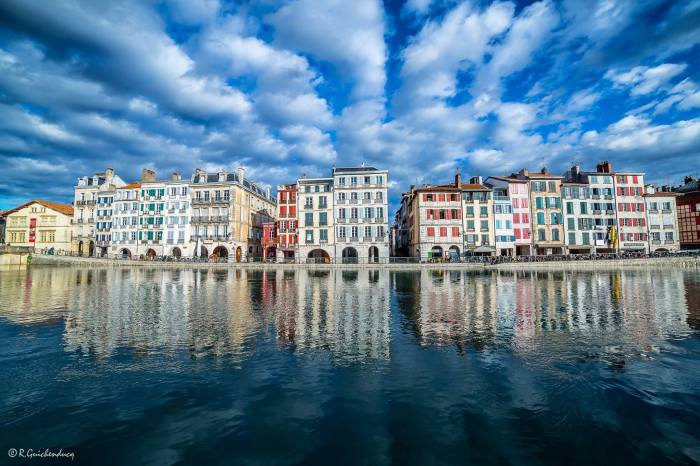Bayonne, New Jersey, a city nestled on the shores of the Upper New York Bay, offers a captivating blend of history, industry, and natural splendor. From its iconic bridge to its vibrant community, Bayonne invites you to explore its many facets.
As a major industrial hub, Bayonne is home to the renowned Bayonne Refinery, a vital part of the region’s economy. Yet, beyond its industrial legacy, Bayonne boasts a rich cultural heritage, with a diverse population and a thriving arts scene. Its beautiful parks, beaches, and waterways provide ample opportunities for recreation and relaxation.
Bayonne, New Jersey

Bayonne is a vibrant city located in Hudson County, New Jersey, across the Kill Van Kull from Staten Island, New York. With a rich history and diverse population, Bayonne offers a blend of urban amenities and waterfront charm.
Established in 1861, Bayonne has witnessed significant industrial growth, particularly in shipbuilding and oil refining. Today, the city boasts a diversified economy with a strong focus on manufacturing, transportation, and logistics.
Demographics
As of 2020, Bayonne’s population was estimated at approximately 71,000 residents. The city has a diverse ethnic and racial makeup, with significant populations of Hispanic, Asian, and African American residents.
Major Landmarks and Attractions
- Bayonne Bridge: This iconic suspension bridge connects Bayonne to Staten Island and offers stunning views of the New York Harbor.
- Constable Hook: A former peninsula that has been transformed into a waterfront park with walking trails, fishing piers, and a marina.
- Bayonne Golf Club: One of the oldest golf courses in the United States, established in 1892.
Cultural Significance
Bayonne has a rich cultural heritage, evident in its numerous historical landmarks and cultural institutions.
- The Bayonne Museum: Houses a collection of American and European art, as well as historical artifacts related to the city’s past.
- The Bayonne Public Library: Offers a wide range of programs and services, including author readings, book clubs, and educational workshops.
- The Bayonne Community Theater: Presents a variety of live performances, including musicals, plays, and concerts.
Bayonne Bridge

The Bayonne Bridge is an iconic suspension bridge that connects Bayonne, New Jersey, to Staten Island, New York. It spans the Kill Van Kull, a narrow strait between the two states. The bridge is a vital transportation link for the region, carrying both vehicular and rail traffic.
The history of the Bayonne Bridge dates back to the early 20th century. In 1913, the New York and New Jersey Bridge Commission was created to study the feasibility of building a bridge across the Kill Van Kull. The commission recommended the construction of a suspension bridge, and in 1926, the Port Authority of New York and New Jersey took over the project.
Design and Construction
The Bayonne Bridge was designed by Othmar Ammann, who also designed the George Washington Bridge and the Verrazano-Narrows Bridge. The bridge is a suspension bridge with two main spans, each measuring 1,652 feet (503 meters) in length. The total length of the bridge is 5,069 feet (1,545 meters), and its towers rise 500 feet (152 meters) above the water.
The construction of the Bayonne Bridge was a major engineering feat. The bridge was built using a cantilever method, in which the two main spans were built out from each tower and then joined in the middle. The bridge was completed in 1931, and it was opened to traffic on November 15, 1931.
Impact on the Region
The Bayonne Bridge has had a significant impact on the region. The bridge has provided a vital transportation link between New Jersey and New York, and it has helped to spur economic development in both states. The bridge is also a popular tourist destination, and it offers stunning views of the New York City skyline.
Architectural and Engineering Marvels, Bayonne
The Bayonne Bridge is an architectural and engineering marvel. The bridge is one of the longest suspension bridges in the world, and it is also one of the most heavily traveled. The bridge is a testament to the skill and ingenuity of the engineers who designed and built it.
- The Bayonne Bridge is one of the most recognizable landmarks in the New York City area.
- The bridge is a popular spot for photography and sightseeing.
- The bridge has been featured in numerous films and television shows.
Bayonne Refinery
The Bayonne Refinery, established in 1875, is a major oil refinery located on the eastern shore of Upper New York Bay in Bayonne, New Jersey. It is owned and operated by Phillips 66, one of the largest energy companies in the United States.
Bayonne, a vibrant city, is renowned for its rich history and cultural tapestry. Its close proximity to Alamo San Antonio , a historic landmark and symbol of Texan heritage, makes it an ideal destination for those seeking a blend of urban charm and historical exploration.
Bayonne’s diverse culinary scene, vibrant arts community, and stunning waterfront views further enhance its appeal, making it a captivating destination for travelers and locals alike.
The refinery processes crude oil into a variety of refined products, including gasoline, diesel fuel, jet fuel, and heating oil. It has a capacity to refine approximately 238,000 barrels of crude oil per day, making it one of the largest refineries in the United States.
Operations
The Bayonne Refinery uses a variety of refining processes to convert crude oil into refined products. These processes include:
- Distillation: This process separates the crude oil into different fractions based on their boiling points.
- Cracking: This process breaks down the heavier fractions of crude oil into lighter fractions, such as gasoline and diesel fuel.
- Reforming: This process converts low-octane gasoline into high-octane gasoline.
- Treating: This process removes impurities from the refined products.
Impact
The Bayonne Refinery has a significant impact on the local economy and environment. It provides jobs for approximately 500 people and contributes to the local tax base. The refinery also produces a variety of products that are essential to the transportation and energy sectors.
However, the refinery has also been the subject of environmental concerns. The refinery has been cited for violations of air and water pollution regulations. In recent years, the refinery has invested in pollution control measures to reduce its environmental impact.
Bayonne Community

Bayonne is a vibrant and diverse community, where people from all walks of life come together to create a unique and welcoming atmosphere. With a rich cultural heritage and strong traditions, Bayonne’s residents take pride in their city and its people.
Bayonne, New Jersey, holds historical significance. If you’re interested in exploring more about American history, I recommend visiting the Atlanta History Center. It offers a captivating journey through the city’s past. Upon returning to Bayonne, you’ll appreciate its rich heritage even more.
The city’s cultural heritage is evident in its many festivals and events, such as the annual Bayonne St. Patrick’s Day Parade, one of the largest in the country. Bayonne is also home to a number of museums and historical sites, including the Bayonne Historical Museum and the Stephen R. Gregg Museum.
Social and Economic Fabric
Bayonne’s social fabric is strong, with a sense of community that is evident in the many volunteer organizations and community groups that operate in the city. The city also has a strong economy, with a diverse mix of industries, including manufacturing, transportation, and finance.
Bayonne is a city with a rich history and a bright future. Its diverse and vibrant community is one of its greatest strengths, and its residents are proud to call Bayonne home.
Bayonne’s rich history and diverse culture make it a fascinating destination. If you’re interested in exploring more European cities with a similar charm, consider visiting bern , the beautiful capital of Switzerland. With its cobblestone streets, medieval architecture, and stunning natural surroundings, Bern offers a captivating experience that complements the unique allure of Bayonne.
Bayonne Peninsula
The Bayonne Peninsula, situated in the northeastern part of New Jersey, is a prominent geographical feature of the region. It is a peninsula bordered by the Upper New York Bay to the east, the Kill Van Kull to the south, and the Newark Bay to the west. The peninsula encompasses the city of Bayonne, as well as several parks, beaches, and other natural areas.
The Bayonne Peninsula is characterized by its diverse natural features. It is home to several parks, including the Bayonne Park, Stephen R. Gregg Park, and the Peninsula at Bayonne Harbor. These parks offer a variety of recreational opportunities, such as walking, jogging, biking, and picnicking. The peninsula also features several beaches, including the 16th Street Park Beach and the Bayonne Golf Club Beach. These beaches provide opportunities for swimming, sunbathing, and other water-related activities.
In addition to its recreational value, the Bayonne Peninsula also has significant environmental significance. The peninsula is home to several important wildlife habitats, including the Bayonne Meadowlands. This area is a critical stopover point for migratory birds, and it is also home to a variety of other wildlife, including deer, rabbits, and foxes. The peninsula is also home to several important wetlands, which provide important flood control and water filtration services.
Bayonne Transportation
Bayonne offers a comprehensive transportation network that caters to diverse commuting needs. Its strategic location at the crossroads of major highways, a robust public transportation system, and convenient ferry services provide seamless connectivity to New York City and beyond.
Road Network
Bayonne’s extensive road network connects it to neighboring communities and major metropolitan areas. The New Jersey Turnpike (Interstate 95) runs through the city, providing a direct route to Newark, New York City, and Philadelphia. Other key highways include Route 440, the Bayonne Bridge, and the Pulaski Skyway, which facilitate efficient travel within the region.
Public Transportation
Bayonne is well-served by public transportation options. The Hudson-Bergen Light Rail (HBLR) operates two lines through the city, connecting it to Jersey City, Hoboken, and Weehawken. The HBLR provides frequent service and convenient access to New York City via the PATH train at Hoboken Terminal. Additionally, several NJ Transit bus routes serve Bayonne, offering connections to neighboring towns and major transportation hubs.
Ferry Services
Bayonne is home to two ferry terminals that provide direct access to Manhattan. The Bayonne Ferry Terminal offers frequent service to Pier 11 in Lower Manhattan, while the Port Imperial Ferry Terminal connects to Midtown Manhattan. These ferry services offer a scenic and convenient alternative to commuting by road or rail, providing stunning views of the New York City skyline.
Closure

Whether you’re a history buff, an architecture enthusiast, or simply seeking a charming destination, Bayonne has something to offer. Its unique blend of industry, culture, and natural beauty makes it a city that will captivate your imagination and leave a lasting impression.
FAQ Section: Bayonne
What is Bayonne known for?
Bayonne is known for its industrial legacy, particularly the Bayonne Refinery, as well as its iconic Bayonne Bridge and its vibrant community.
What are some popular attractions in Bayonne?
Popular attractions in Bayonne include the Bayonne Bridge, the Bayonne Park, the Bayonne Golf Club, and the Military Ocean Terminal at Bayonne.
Is Bayonne a good place to live?
Bayonne offers a good quality of life, with affordable housing, a diverse community, and access to parks, beaches, and public transportation.